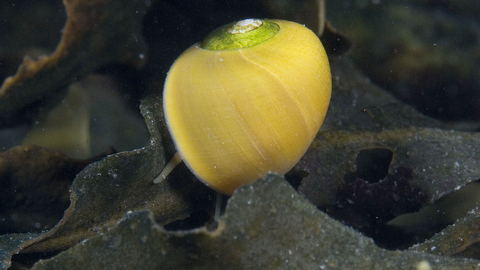
Paul Naylor
Flat periwinkle
Scientific name: Littorina obtusata/fabalis
These little sea snails are found amongst the seaweed on rocky shores around much of the UK. They come in lots of different colours, from bright yellow to chequered brown!
Top facts
Category
Stats
Height: Up to 1.5cmConservation status
Common
When to see
January to DecemberAbout
Found amongst the seaweeds on which it feeds, the flat periwinkle lives on the lower parts of the shore. It is most commonly associated with Bladder Wrack seaweed and can be mistaken for the air bladders that makes the seaweed float.They come in lots of different colours, including orange, bright yellow, banded brown and a sort of olive green that makes them hard to spot amongst their seaweed home.
